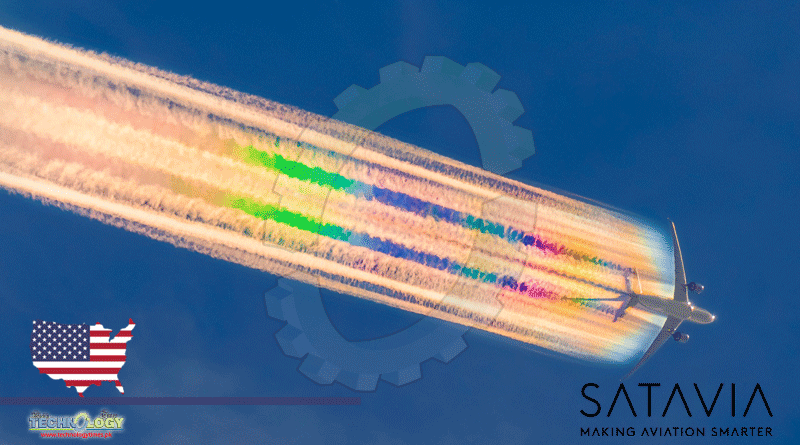Satavia Says 60 Per Of Aviation’s Footprint Could Be Wiped Out By Smarter Flight Planning.

The rise in air passengers has been stratospheric, especially since the arrival of the jet engine. In 1960, the total annual world-wide passenger count was 100 million. By 2017, it was 4 billion. This stratospheric growth has been catastrophic for the environment – flights produced 915 million tonnes of CO2 in 2019 and aviation accounts for 2 per cent of total global CO2 emissions. Not as bad as road transport, which accounts for 24 per cent of total global emissions, but enough to send shivers down the spines of environmentalists.
But Cambridge company Satavia says 60 per of aviation’s footprint could be wiped out by smarter flight planning. Satavia has modelled the Earth’s atmosphere in Microsoft Azure from ground-level to space. Satavia uses artificial intelligence and data analytics to study and tackle aircraft contrail formation. This occurs when aircraft cruising above 26,000ft create clouds that can warm the Earth’s atmosphere. The company is working to reduce aviation’s impact on the planet through smarter flight planning and the development of an AI platform called DECISIONX, which uses weather prediction modelling to generate a high-resolution replica of the Earth’s atmosphere over time. The platform can quantify atmospheric changes in heat, sunlight, moisture, pressure, temperature, humidity, clouds and wind speed, among other factors.
The platform enables aircraft operators to accurately forecast, avoid, validate, quantify and offset aviation contrail emissions by optimising flight plans. Dr Adam Durant, founder and CEO of Satavia, said Azure was “vital” to tackling the issue because of its ability to handle scalability, AI tools and large amounts of data. “Using our numerical weather prediction model, we can generate a ‘digital twin’ of the atmospheric environment from ground-level to top of atmosphere – around 328,000ft,” said Dr Durant, a professional scientist who has held positions at the University of Cambridge and the Norwegian Institute for Air Research. “Our model performs around 100 algorithmic computations over four billion model cells every 30 seconds for 26 meteorological parameters, generating one quadrillion –1,000 trillion – computations per simulation day: that’s how we define ‘hyperscale’. We’re delighted to have worked with Microsoft on this test of our ability to scale, demonstrating the incredible scalability and ultra-high-performance provided by Microsoft Azure.” When water vapour emitted from aircraft engines rapidly saturates already moist air, the vapour condenses and freezes into minute ice crystals. This results in the formation of contrail clouds, which trap heat in the Earth’s atmosphere. Prior to the Covid-19 pandemic, there were more than 93,000 flights a day across the world. A return flight from London to San Francisco emits around 5.5 tonnes of CO2 equivalent per person – more than twice the emissions produced by a family car in a year. Yet contrail formation exerts a climate impact almost twice as great as aircraft engine emissions, accounting for around 60 per cent of aviation’s total climate impact.
Dan Baker, Satavia’s chief technology officer, said: “We wanted to open up our data to everyone, since it’s an unusually rich data-set in terms of both parameters and resolution. We’re already working with original equipment manufacturers, airlines and military operators in multiple locations, but we’re fundamentally a science-based company and we’re keen to support scientific research, too.” The work being conducted by Satavia, which recently migrated its high-performance-compute infrastructure from a physical datacentre to Azure, aligns with Microsoft’s own ambitions to tackle climate change. In January 2020, the technology company announced its intention to be carbon negative by 2030. The debate over the future of aviation has intensified as global warming proceeds at record levels and a new US government which sees climate change as an ‘existential threat’. Alternatives including hydrogen and bioelectric are being explored, not just by corporations, but nations including Saudi Arabia, which has intensified investments in hydrogen as the main post-oil source of energy, and China.
This news was originally published at Cambridge Independent
